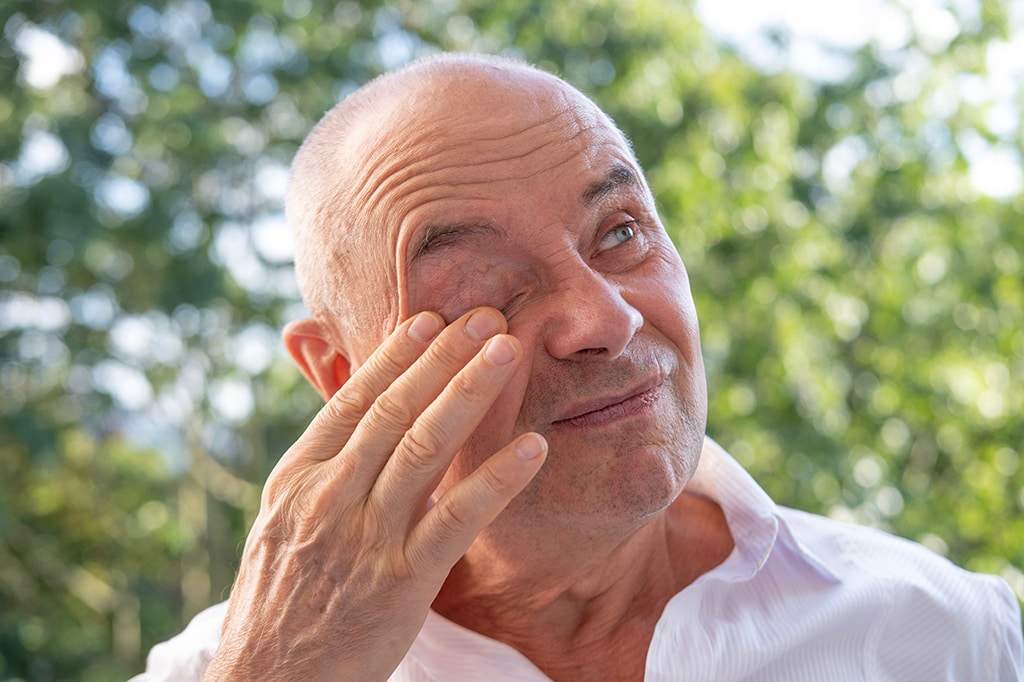Home » Services » Lacrimal Disorders
Lacrimal Disorders
What are Lacrimal Disorders and How are they Treated?
The lacrimal system or apparatus is the anatomical system containing the ocular structures for tear production and drainage. Any disruption to either the production of tears or the drainage of tears will result in lacrimal disorders, which lead to acute or chronic discomfort of the eye.
Dry Eye
What is it?
Dry eye is probably one of the most common problems seen in the ophthalmologist’s office. As we age, the protective tear film on the surface of the eye diminishes. This leaves the delicate tissues of the eye exposed to the drying effects of air, wind, dust, and the sun. The eye can still make tears; in fact, many patients complain of wet eyes and tearing with this condition. This is due to the dryness producing a reflex tearing in an effort to keep the eye well-lubricated.
What causes it?
In many people, the dryness is worse in the afternoon and evenings. Since we blink less frequently when we read, reading can also aggravate the symptoms of dry eyes. Sometimes environmental factors play a role as well. Dry weather, either in hot or cold temperatures, robs the eye of needed lubricants. Cigarette smoke, fumes, dust, and airborne particles are common irritants. In most patients, this condition is not associated with any systemic disease.
What are the symptoms?
Symptoms include burning, stinging, or a gritty sensation which may come and go depending on many factors. Itching, tearing, and light sensitivity may bother other patients. Occasionally long strings of mucus can be stretched from a dry eye. Actually, excessive watering of the eyes may indicate dry eyes, similar to the tearing which occurs with foreign material or lashes in the eye.
How it is treated?
Treatments help most patients. Because there is no cure, treatment must be ongoing. Usually, artificial tears, available over the counter, soothe the eyes and temporary relief. The disadvantage is that artificial tears only work for an hour or two, at best, and must be repeated at frequent intervals. Ointments last longer, but they blur vision and are most effective at night. Newer methods of treatment for seriously dry eyes are soft contact lenses in combination with artificial tears. Sometimes a slow-release medicine under the lower lid is helpful as well. Should symptoms persist, the drainage ducts can be temporarily or permanently closed, slowing the drainage of tears so they can soothe the dry eye.
Much research is being done on this subject because it is such a common problem. Time-release artificial tears seem to hold the most promise, but details of their use are still being worked out.
Wet Eyes
Blockage within the lacrimal drainage system can keep tears from draining into the nose, causing the tears to build up on the lower eyelid and spill over onto the face. The nasolacrimal duct, a bony canal carrying tears into the nose, is the most common site of obstruction. The main symptom is constant tearing from one or both eyes with tears running down the face. Because access into the nose is blocked, mucous builds up in the lacrimal sac making the patient prone to infection. Infection in the lacrimal sac can be serious as it can spread to the face, orbit, and brain. This condition is treated initially with antibiotics followed by surgical correction of the obstructed duct.
Bacterial Conjunctivitis
The conjunctiva is the clear membrane that encircles and protects the eyeball. When you look at the white of the eye, you are really looking through the conjunctiva at the sclera, the tough, leathery outer coat of the eye. The conjunctiva has many small blood vessels running through it. The purpose of the conjunctiva is to lubricate and protect the eye and to allow it to move in its socket.
Conjunctivitis is an inflammation of the lining of the eye. It can be caused by bacteria (as in “pink eye”), viruses, chemicals, allergies, and more. It is sometimes difficult to tell exactly which is the real cause.
Bacterial conjunctivitis is characterized by swelling of the lid, a yellowish discharge, sometimes a scratchy feeling in the eye, and itching and mattering of the lids, especially in the mornings upon awakening. The conjunctiva is red and sometimes thickened. Often both eyes are involved. The bacteria most commonly at fault are staphylococcus, streptococcus, and H. influenza. This disease is very contagious, and sometimes entire families are infected. Laboratory cultures are not typically used to make the diagnosis since this is expensive and time-consuming. Most infections are over by the time the results of the lab tests come back.
Treatment is curative. Usually, antibiotic drops and compresses ease the discomfort and clear up the infection in just a few days. Occasionally, the infection does not respond well to the drops. In those rare cases, a second visit to the office should be made and other measures undertaken. In severe infections, oral antibiotics are necessary. Covering the eye is not a good idea because that incubates the germs. If left untreated, conjunctivitis can create serious complications, such as infections in the cornea, lids, and tear ducts.
Prevention is important for avoiding the disease and stopping its spread. Careful washing of hands, the use of clean handkerchiefs, and avoidance of contagious individuals are all helpful. Little children frequently get conjunctivitis because of their lack of understanding about hygiene and the resulting contact with germs.
Chalazion
Along the upper and lower lids are located a number of glands that manufacture part of the tear film that protects and lubricates the eyeball. If one of these glands becomes blocked, a small lump forms. This is called a chalazion (chalazia, plural).
Chalazia may vary in size from small, almost invisible lumps to rather large masses as big as a little fingernail. Sometimes tender in their early stages, they are later painless and frequently will form a firm swelling in the lid. This lump can distort the eyeball, causing blurred vision if left untreated.
Chalazia are not caused by infection; however, they may become a site for infection once they have become established. Their exact cause remains unknown. Several conditions are associated with chalazia: seborrhea, chronic lid inflammation, dry eyes, and acne.
Most chalazia will disappear in a few weeks without any special therapy. To help them go away, frequent hot packs throughout the day and drops are helpful, especially in the early stages. In some cases, oral medicines can help prevent recurrences. If a chalazion persists, a simple in-office surgical procedure can be performed to remove it. The chalazion is drained from the inside of the lid after a small injection of a local anesthetic. There is no visible scar and healing is rapid and painless. Often the eye is patched overnight to ensure proper healing.

